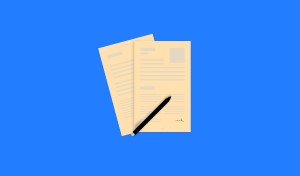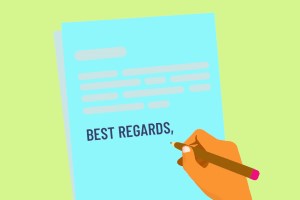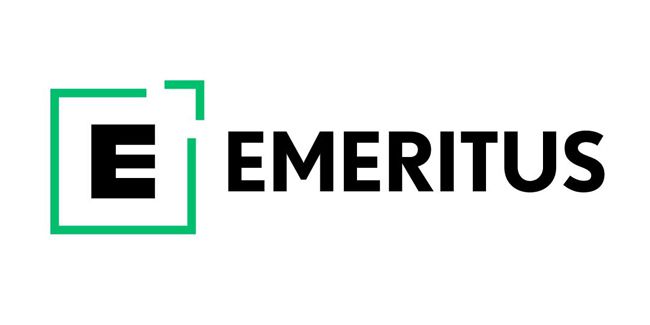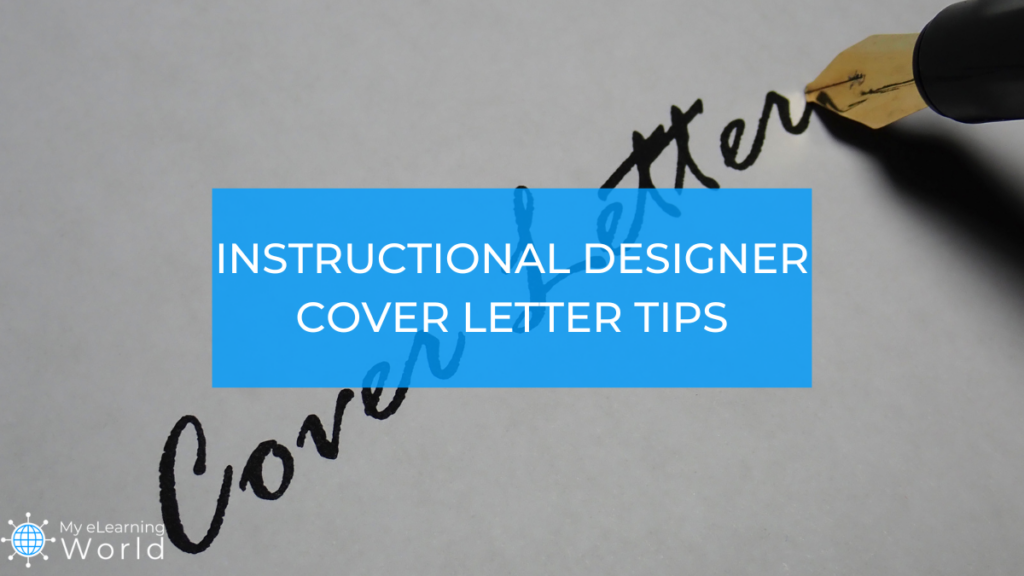Here’s a secret I’ve learned as someone who’s worked in the eLearning industry for the last 20 or so years: A good instructional designer cover letter can increase the chances of you capturing the attention of a hiring manager, getting an interview, and hopefully, landing the job.
Don’t believe me? Consider this — in a recent survey of hiring managers by ResumeGenius, 49% of respondents said a strong cover letter can convince them to interview “an otherwise weak candidate” and about 1 in 5 hiring managers indicated that a bad cover letter can cause them to toss out a strong candidate’s application.
In the guide below, I’ll detail my exact process for writing a killer instructional design cover letter that’s gotten me tons of responses, and I’ll even provide you with some useful cover letter examples.
5 Steps to Writing an Instructional Design Cover Letter
I recommend that you always send a cover letter with your instructional design resume or employment application.
A cover letter can set you apart from the competition.
It’s an opportunity to tell the employer about yourself in more detail than you can include on a resume, giving you a chance to pinpoint specifics about your education or experience that may pique a hiring manager’s interest in learning more about you. It can also be a great place to explain why you’re passionate about instructional design and this job opportunity in particular.
1. Before You Write Your Instructional Designer Cover Letter
Before you write your cover letter, you need to spend a little time doing some research.
I always like to do a deep dive internet search on the organization to learn more about its company culture, community engagement, and reputation. Pore over their website, blog posts, social media pages, customer reviews, press mentions…all of it.
This will help you to tailor your instructional design cover letter in a way that speaks directly to the employer’s needs and interests.
You will be able to address some commonalities that you and the organization share which can go a long way to helping you create a very strong cover letter.
I would ask yourself this question, “If I were a hiring manager, what would I want to know about a candidate for an instructional designer position?”
Make a list of what you think would be the most desirable skills and traits. Narrow the list down to two or three technical ID skills or talents you can use as talking points in the letter’s body to showcase that you’re a strong candidate for the job. This will help you avoid writing a cover letter that is too long.
Review the job announcement or job description carefully, highlight keywords and phrases, and compare them with your resume. Look for comparable words in your resume. When writing your cover letter, you can use the keywords where they naturally fit.
2. Prepare Your Instructional Design Cover Letter with an Applicant Tracking System in Mind

When you send a cover letter digitally, the first reviewer may be an applicant tracking system. The system will scan your letter for keywords and phrases to determine if your application should move forward for human review.
Some formatting and writing can get your cover letter kicked out of the system, and a hiring manager will never see it.
Make your cover letter scan-friendly by keeping our text and layout simple with no unusual fonts, bold text, or bullets. If you must include bullet points, I recommend to use hyphens where you would place bullets. Use the language or keywords that you read in the job announcement to talk about your qualifications.
3. Professional Cover Letter Format
Before you write your instructional designer cover letter, you should know how to format it to look organized, professional, and implore the receiver to take more than a glance at it.
Here’s how I do it:
Use one-inch margins, and leave one space between the heading and date, between the organization’s address and the salutation, and between the salutation and the greeting. Single space each paragraph and leave one space between each paragraph. Leave one space between the last paragraph and the complimentary closing.
After the complimentary closing, leave three spaces and then type your name. You will sign the letter between the complimentary closing and your typed name.
Let’s look carefully at each section of your cover letter and what it should include:
- Contact Information
- Greeting
- Introduction
- Body
- Concluding paragraph
- Complimentary Closing
Your contact information
At the top of your cover letter, you will place your personal contact information, including your name, street address, city and state, phone number, and email. Some experts call this the heading. Where you place your heading, or the personal contact information is a preference. You can create a personalized letterhead by centering the heading. You can also justify it at the top left or place it at the right of the page over the employer’s contact information.

For security reasons, consider whether to include your home address or phone number, especially if you email your cover letter separately from the employer’s secure online platform. After you complete your contact information, skip a line, and enter the date, then skip a line to enter the employer’s contact information.
Employer’s Contact Information
The employer’s contact information should include the hiring manager’s name, company name, company address, city, state, and zip code.
Salutation or Greeting
It is common to see the greetings such as “To Whom It May Concern.” However, if possible, I recommend making your greeting or salutation line personal. In my experience, more times than not you can find the hiring manager’s name on the organization’s website, or you can call and ask for the name. If you can’t find the name of the individual who might review your cover letter, you can use a generic salutation such as “To Whom It May Concern.”
Introduction
Your introduction or opening paragraph is where you tell the prospective employer who you are and why the position interests you. I’ve heard from more than a few of my friends who are hiring managers that they only spend a few seconds glancing at a typical cover letter and if they aren’t immediately hooked, they won’t read the whole thing.
This paragraph is where you want to catch the reader’s attention and hopefully get him or her to read the entire letter and move on to your resume.
For example, I don’t think you need to say, “I am writing to express my interest in the instructional designer position you advertised.” The hiring manager already knows you are interested in the position.
The opening of your letter is where you want to grab the reader’s attention and generate some curiosity about you.
Try opening the letter with a statement like, “I was thrilled to learn about an instructional designer position with your company.” Wording your opening in this way shows enthusiasm and passion and may make the reader curious enough to keep reading to determine why you are “thrilled” about the job.
You might begin telling your story with a sentence that describes why the employer should consider you for the job: “For over 15 years, I have led teams in developing strong training programs that resulted in positive outcomes, including reduced waste and increased revenue.”
If an employee of the company referred you for the position, it is appropriate to mention that information because it could carry some weight with a hiring manager.
Body
In your instructional design cover letter’s body, you provide information about your experience and why you should be the top contender for the job. If I am a hiring manager, I want to know what sets you apart from the hundreds of other people applying for this job.

The first paragraph in the body provides an opportunity to dive deeper into your qualifications. You don’t need to repeat most of your resume, but you want to convince the reader to look at your resume.
However, when you submit a digital cover letter, you can include a link to your instructional designer portfolio. The link is likely to grab the reader’s attention, making him or her curious enough to click to see where it will lead. As a result, the hiring manager will see your portfolio, which brings your qualifications to life.
If you need to share other details, you can add a second paragraph to keep the page from being cluttered. However, keep it brief so that the letter doesn’t run beyond one page. The second paragraph provides the opportunity to let the reader know that you understand the organization’s goals and values. For example, if you know the company supports a cause you care about, you can mention that.
Concluding Paragraph

The concluding paragraph is where you wrap up your letter and include a call to action. Your goal here is to get the hiring manager to contact you for an interview. This is where you thank the reader and make the appeal for an interview. After writing your conclusion, sign your letter.
Complimentary Closing
This section contains a closing word or phrase such as “Sincerely” or “Thank you,” space for your signature, and your typed name and title(s) when appropriate.
4. Proofread Your Cover Letter
Once you complete the first draft of your cover letter, it’s time to proofread it carefully. You want to make sure this is a high quality, professional cover letter that doesn’t have any mistakes that make you look careless.
Start with the contact information. Ensure that your contact information is correct. The last thing you want to happen is that an employer can’t contact you for an interview because of a typo. You should also check the organization’s address. It would be embarrassing to make an error in the employer’s address, especially as an instructional designer who should pay attention to details.

Continue proofreading the remainder of your letter for grammatical errors and spelling. If you have a grammar checker, use it. Read the letter out loud, or if you have a screen narrator, you can use that to read your text. Allow the letter to rest for a few hours and reread it. Chances are you will discover areas where you can make improvements.
Many writing experts say you should not proofread your own work. They mean that when a writer is so familiar with the work, it may be difficult to catch all the errors. After you proofread your cover letter, ask someone to be honest with you to critique your letter for errors and clarity. You can ask a friend, family member, or a professor. Just make sure the person you ask has some knowledge of spelling and grammar and will be honest when giving feedback.
Once the proofreading process is complete and you have made adjustments, your letter will be ready to send to the employer.
Sample Instructional Designer Cover Letter Example
The following is an instructional design cover letter example:
Click here to download in PDF.
Jane Doe
645 Any St.
Any Place, SC 00000
August 28, 2024
Mr. John Smith
The Learning Company
109 Learning Lane, Ste. 305
Any Place, SC 00015
Dear Mr. Smith
I was excited to learn of the open position of Senior Instructional Designer at The Learning Company. Instructional Design is truly my passion. After working for five years in the field, I am ready and prepared to assume a senior role.
Based on the job announcement, you need an instructional designer who can lead a team of subject matter experts, writers, software developers, and trainers in designing instructional resources for organizations without in-house instructional design teams. My experience includes instructional design and development. I am proficient in several course authoring tools and eLearning software development. You can click here for an online portfolio of my work samples.
One aspect of your company that I find impressive is your summer internship program that gives students in master’s and graduate certificate programs opportunities to work with seasoned instructional design professionals. I know how important it is for aspiring instructional designers to have hands-on experience when looking for their first job. I would love to serve as a mentor to interns.
I appreciate your taking the time to consider my application, and I would be honored to meet with you to discuss what I can bring to your company. You can reach me at (555) 555-5555 or by email at jane@mymail.com. I look forward to hearing from you.
Sincerely
Jane Doe
The sample cover letter example introduces the candidate in the opening paragraph. In the body, the candidate offers an overview of her instructional design experience and explains why she is an ideal candidate for the position by comparing specific experience and technical skills with what was mentioned in the job announcement.
The candidate also takes advantage of submitting the cover letter digitally by including a link to her portfolio site. In the third paragraph, she shares how her values align with the organization’s values of helping aspiring instructional designers gain professional experience through internships. In the closing paragraph, she includes a call to action to ask for an opportunity to meet with Mr. Smith and provide information on the needs to contact her.
5. Customize Each Cover Letter
Always customize your cover letter for the job. When you apply for several jobs, you may be tempted to make a few tweaks and use the same letter. However, you might mistakenly leave information from a past letter in the updated version. Start with a fresh perspective by writing a new letter.
FAQ
What is a cover letter?
A cover letter is an important document that accompanies your resume when you are applying for a job or other professional opportunity. Typically, this letter serves as a way to introduce yourself and your qualifications to potential employers, highlighting your most relevant skills and experience.
When should I send a cover letter?
A cover letter should always be submitted with your resume, unless the employer specifically says not to include one. With that said, there are certain situations where a cover letter might not be necessary, such as when applying for a job through an online application system that doesn’t allow you to upload additional documents.
Why are instructional designer cover letters important?
The cover letter is important part of any job application, as it gives hiring managers a chance to learn more about you and how you might be an excellent fit for the position. It gives the employer an opportunity to see what kind of attitude you have and how you express yourself. It also can explain any gaps in your employment history or unusual circumstances that might otherwise raise questions.
In addition, a cover letter can demonstrate that you have done your research on the company and explain why you think you would be a good fit for the position. Ultimately, a well-written cover letter can help you stand out from the crowd and increase your chances of getting an interview.
Useful Resources
- What is instructional design?
- What Do Instructional Designers Do?
- How to Become an Instructional Designer
- What Is the Purpose of a Cover Letter?
- Top 20 Instructional Design Interview Questions – How to Answer Them
- 5 Common Misconceptions About Instructional Designer Salaries
- The Best Instructional Design Courses Online
- Instructional Design Masters Programs
- Instructional Design Career Path
- Instructional Design vs Curriculum Development
- Key Instructional Design Principles
- How to Create an Instructional Design Document
Final Thoughts
Writing a great cover letter for an instructional design job takes time and practice, but practice makes perfect.
When you apply for an instructional design job, there might be other applicants with similar technical skills, but you can stand out with a powerful cover letter.
Whether you want to emphasize a skill, a major impact of work made at a previous job, or a degree or certificate you earned, with some thought and carefully crafted sentences, you can write a boss cover letter that will help move your application to the next step in the process.
Simply put, while a good cover letter can’t guarantee you a job, it can give you a better chance of getting your foot in the door.
Lastly, if you’re interested in getting more training in instructional design, we highly recommend checking out the Professional Certificate in Instructional Design program from Emeritus. It’s an intensive, 5-month bootcamp that teaches the basics of instructional design, popular instructional design theories, best practices for implementation in an online learning environment, and a whole lot more.
You can learn more about the program and request a brochure at this link.
 Emeritus Professional Instructional Design Certificate | Online Certificate Course
Emeritus Professional Instructional Design Certificate | Online Certificate Course
Gain firsthand expertise in instructional design principles and methodologies through this unique Professional Certificate program. Create impactful learning solutions and improve people's ability to learn.
The next class kicks off on October 22, 2024, so don't miss your chance to enroll now! Take advantage of early bird discounts leading up to the kickoff date:
20% off until September 3
15% off until September 24
10% off until October 15
Have a question about writing your instructional design cover letter? Comment below so we can help you out.
- Elevating Your Virtual Presence: Why EMEET’s SmartCam S800 Stands Out in Modern Communication - 06/04/2025
- US Teachers Will Spend $3.35 Billion of Their Own Money on Classroom Expenses in 2025-25 School Year - 06/04/2025
- Report: Leveraging AI Tools Could Help US Teachers Avoid $43.4 Billion of Unpaid Overtime Work - 06/04/2025



